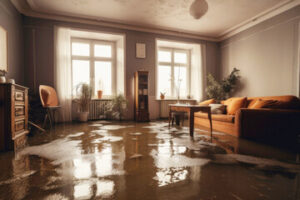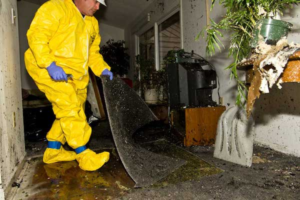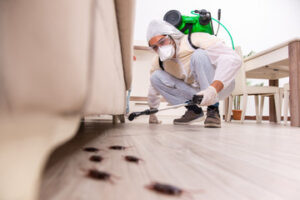Baton Rouge SEO is a set of tactics that can help your company’s website appear higher on search engine results pages. These techniques include keyword research, content creation, and link building.

A good SEO strategy takes into account emerging trends in technology, customer expectations and the competitive environment. It also focuses on building trust, proving expertise and establishing authority.
Whether you’re a beginner or a SEO veteran, keywords are the foundation of any successful online marketing strategy. But how do you choose the right ones? This blog will explore the importance of choosing the right keywords, how to find them, and how to use them effectively in your content.
Before we begin, let’s define what a keyword is. A keyword is a word or phrase that search engine users type into the search bar. While we often think of them as single words, they can also be phrases such as “mens leather jacket.” A keyword can be a specific topic or a general term, and it helps search engines understand what the user is looking for.
When it comes to online marketing, keywords are the most important tool for attracting new customers and boosting sales. However, not all keywords are created equal. Using the wrong keywords can be disastrous for your brand’s reputation and traffic.
To avoid these problems, start with the basics and understand how search engines work. It’s also important to remember that the keywords you select will have a direct impact on your business’s bottom line. In addition to ranking high in SERPs, you’ll also want to make sure that your keywords are relevant to your target audience.
Ultimately, your selection of keywords will depend on the type of content you are trying to promote. There are three functional types of keywords: informational, commercial and transactional. Each one represents a different search intent. Informational searches are those that seek answers to questions or provide an overview of a particular topic. Commercial searches typically have a clear purchase intention and are looking for a product or service that meets their needs. Finally, transactional keywords are those that signal that the searcher is ready to buy and are seeking a competitive price, guarantee, or return policy.
After you’ve decided on the right keywords for your content, it’s time to start optimizing. Make sure that your chosen keywords are incorporated into all of your content on your site, including website pages, blog posts, and product descriptions. You can even consider adding them to your social media profiles to bring in more traffic.
On-page optimization
On-page optimization is the practice of optimizing individual web pages on a website for search engine rankings. It involves applying the knowledge gained from keyword research to your page content. This can help your webpages rank higher in search engine result pages (SERPs) and generate more organic traffic.
On-page SEO is one of the most important aspects of your digital marketing strategy. It ensures that the content on your pages is relevant and matches users’ search intent. It also helps Google understand your site structure and the relationships between pages. There are many different elements of on-page optimization, including title tags, meta descriptions, and internal linking. You can use a tool to evaluate your on-page SEO or check it manually.
The first step in on-page optimization is identifying keywords that are relevant to your business. You can do this by performing research on your competitors’ websites and using tools such as Ahrefs, AnswerthePublic, SE Ranking, and UberSuggest. Once you have a list of relevant keywords, use them in your title tags and meta descriptions. Make sure to avoid keyword stuffing, as this can be counterproductive and lead to a penalty from Google.
Another important element of on-page optimization is the h1 tag, which is the text that appears in the top of your page. It should include your targeted keyword in the beginning of the tag and be no longer than 60 characters. This will allow Google to display a complete title for your page in search results and increase your click-through rate.
In addition, the h2 and h3 tags are important for on-page SEO. These are the paragraph headings that break up large walls of text and provide context for the user. Lastly, the h1 tag is important because it helps Google categorize your page. It’s important to choose a descriptive title that matches your target keyword and provides an accurate description of the page.
The meta description is a key factor for on-page SEO, as it will appear below the title in search results. It’s a good idea to keep it short and concise, as long and wordy descriptions are not attractive to users. It is also helpful to include a call to action, such as “click here” or “learn more,” in your meta description.
Link building
Link building is one of the most important aspects of SEO. According to Google’s Andrey Lipattsev, a page with many high-quality backlinks will likely rank higher in search engine results pages (SERPs). But there are certain things you should keep in mind when implementing your link-building strategy. For starters, you should only use natural links that are earned through content and not bought or otherwise manipulated. This is known as black-hat link building and can cause your site to be penalized by Google.
It’s also a good idea to focus on high-quality links from authority sites. This is because they carry more weight in Google’s algorithm. For example, a link that comes from the New York Times is going to pass more “link equity” than a link on a small blog.
Creating high-quality content that is useful to your audience is another great way to build links. This can be achieved by conducting thorough research on topics that your audience cares about. This will help to position you as an expert in your industry, which can lead to more organic links.
You can also build links by writing a guest post for a high-authority website or publication. By doing this, you’ll increase your visibility in the industry and build brand awareness. This will ultimately result in more organic traffic and sales for your business.
When choosing a site to write for, make sure that it’s relevant to your niche and audience. Moreover, it’s always better to get links from a highly-related site than a site with a similar topic. For instance, a link from a gardening website won’t have much value for your SEO, but a link from a sports blog will. This is because the link will be relevant to your target audience. Similarly, you should try to avoid using low-quality links, as they can lower your domain authority and impact your search rankings. If you’re not careful, your links could end up in a spam folder and damage your reputation. It’s best to avoid this by following the best practices for link building.
Content creation
Content creation involves creating various forms of media, including written and visual content, to communicate your ideas, information, and perspectives to a particular audience. The goal is to attract and engage your target audience, leading them to your website and ultimately converting them into customers. Content can be created in a variety of formats and types, but it is important that the content you create aligns with your business goals. For example, if your objective is to generate leads, you may want to create guides that require visitors to submit an email address in order to receive the complete guide.
SEO is a critical part of content creation, and it involves creating and optimizing content to increase visibility on search engines. It also includes researching and identifying keywords that are most relevant to your audience. Using these keywords will help search engines find your content, which in turn will boost your rankings and drive more traffic to your website.
The first step in SEO is determining the best keywords to use for your business. This can be done by analyzing your competitors’ websites and keywords. You can also use tools such as BuzzSumo and Keyword Tool to generate a list of potential keywords. Ensure that the keywords you choose are relevant to your audience and are not too competitive. It is also important to avoid “keyword stuffing,” which refers to incorporating keywords into your content as many times as possible.
Once you have identified the right keywords, it’s time to start putting together your content. To begin, think about the problems and challenges your audience faces. You can then create content that addresses those problems and provides solutions. This will establish you as an authority in your field and attract new customers.
Keep in mind that creating effective content takes time and effort. It’s important to be patient and stick with a consistent schedule. However, if you aren’t seeing results after a few months, you should consider a different approach.







